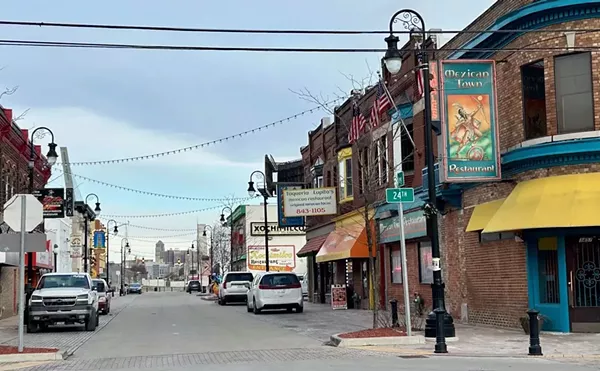By now, most have heard the circumstances surrounding the fatal shooting of Michael Brown, an unarmed 18-year-old who died earlier this month in the streets of a St. Louis suburb. Brown, according to an autopsy released on Sunday, was shot at least six times by a police officer in Ferguson, Mo., a community of roughly 21,000.
What has happened in the days following Brown's death has mushroomed into a larger narrative that speaks to a number of sensitive issues: racial tensions have sparked nightly protests that have quickly devolved into chaos, a suburban police force resembling more of an occupying army than a daily law enforcement unit has drawn widespread criticism. On Monday, Missouri Gov. Jay Nixon ordered the state National Guard into Ferguson to quell the unrest.
But it's the circumstances surrounding Brown's final moments that draw the most questions: Why did the officer shoot Brown several more times when, as witnesses have told numerous media outlets, he was nearly 35 feet away from his patrol car? According to published reports, the accounts substantially vary between Ferguson police, who claim Brown was the aggressor, and witnesses, including Brown's friend, who say Officer Darren Wilson pulled out a gun and shot Brown, who was slated to begin college courses last week.
And the fact it took Ferguson police roughly a week to release substantial details of the shooting, especially considering how conflicting the accounts turned out to be, sparked numerous rallies across the nation last week. Thousands gathered to call for justice in Ferguson, and for a succinct response to police brutality.
That's why Althea Long, of Detroit, joined hundreds in Hart Plaza in concert with the social media-developed National Moment of Silence.
"We're watching them get slaughtered by those who are supposed to be protecting them," says Long, 62, of Brown's death and other teenagers recently killed by police officers.
"If it can happen in Ferguson, it can happen in Detroit," Long says.
The immediate response to protests following Brown's death — the deployment of a virtual occupying army — has only pushed the buttons of a community still reeling from the loss of one of its own. With officers wearing army fatigues, towing AR-15s, shooting off tear gas as if Ferguson P.D. carries an infinite supply, the scene resembles a war zone. In the United States. In 2014.
But the militarization of the police isn't a surprise to observers. In June, the American Civil Liberties Union released a report that showed police departments in towns as small as Ferguson commonly use military tactics, and have gained a substantial amount of surplus military gear through a federal program that predates 9/11.
The report included a number of eyebrow-raising points, including:
• Police departments have been incentivized by federal programs to scoop up military gear, providing opportunities for what the report says is "unnecessarily aggressive weapons and tactics designed for the battlefield." The ACLU found roughly 500 departments have received Mine Resistant Ambush Protected vehicles, which are "built to withstand armor-piercing roadside bombs," the report says.
• There has been virtually no public oversight of the militarization of police units. "Not a single law enforcement agency in this investigation provided records containing all the information that the ACLU believes is necessary to undertake a thorough examination of police militarization," the report says.
• Nearly 80 percent of SWAT team deployments were used for executing search warrants, and only 7 percent of the time for hostage, barricaded, or active shooter scenarios.
The decision to respond to daily protests with armored vehicles and AR-15s has been met with a considerable public pushback from some former law enforcement officials, including Norman Stamper, the police chief in Seattle during the infamous 1999 anti-World Trade Organization protests.
Speaking with Vox, Stamper says his decision to use heavy-handed tactics in Seattle was the worst mistake of his career.
"What happened in Seattle ... was a police overreaction, which I presided over," Stamper says. "It was the worst mistake of my career. We used chemical agents, a euphemism for tear gas, against a nonviolent and essentially nonthreatening protesters. The natural consequence of which are that we were the catalyst for the heightened tension and conflict rather than peacekeepers, or for that matter even peacemakers. It's a lesson, unfortunately, that American law enforcement in general has not learned."
Amid the weeklong protests, there have been reported incidents of looting and violence, but those situations have been met with an equal response from fellow residents attempting to restore some peace and order. And though Stamper hasn't spoken with anyone in Ferguson, what he's saying is the scene perhaps wouldn't have derailed so suddenly had the police responded as a group of so-called peacekeepers. The point, he says in the Vox story, is to first attempt to de-escalate the situation.
"In other words, your mission is not to provoke, it is to de-escalate," he says. "It is to ease tension, and if everyone knows that that's the mission, that's a huge step forward — a huge advancement, frankly, over where we are in many law enforcement agencies."
He adds, "Everyone within the police department needs to be singing from the same sheet of music, from the chief to the cop on the beat. Then you want to be very sensitive to how you look. We were described as looking like ninja warriors in Seattle during the WTO [protests]. Now, I'm all for providing protective gear for police officers ... if the situation dictates it ... But we tried it out well in advance of what I consider to be a legitimate threat."
Combine all those circumstances in Ferguson with racial tensions alarmingly high to the point that, as the Washington Post reported, "black men and women talked about [have] fears of random stops while driving in the city," it's perhaps unsurprising the police response provoked such a backlash.
In Detroit, the Rev. David Bullock told a crowd of 500 at Hart Plaza that the death of Brown should bring racial prejudices to the forefront of the nation's dialogue.
"Until somebody gets tired of racial prejudice in the United States of America," Bullock says, "we will not overcome."
But Detroit resident Long says it's not about race; to her, it's simply a concern that law enforcement officials use heavy-handed tactics and respond inappropriately all too often.
"If they are policeman doing their jobs ... I'm OK with that," Long says. But "wrong is wrong. That's all I'm saying."







